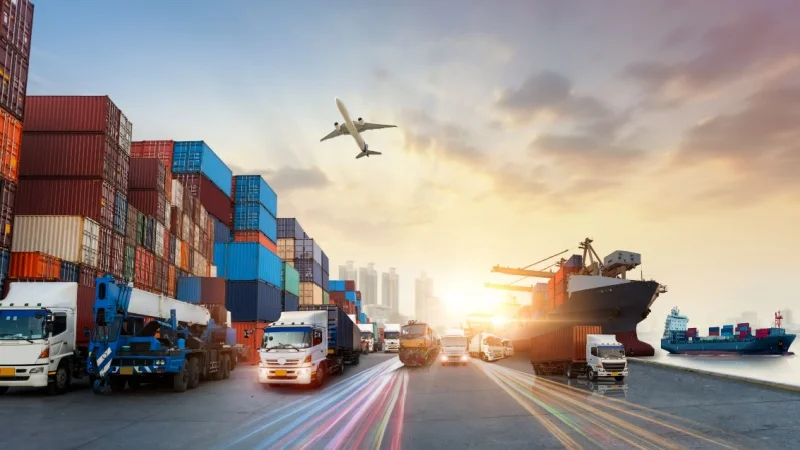Container transport is a crucial part of global trade. It involves using large containers to move goods across different modes of transportation, such as ships, trucks, and trains. This system has transformed how businesses operate, allowing them to ship products quickly and efficiently. In this blog, we will explore the basics of container transport, its benefits, types of containers, and how it works.
Understanding Container Transport
Container transport plays a vital role in enhancing global trade by offering a decent method for moving goods. It involves using large, standardized containers that can easily transit between different transportation modes. This method simplifies logistics, reduces shipping times, and enhances security for products during transit. With increasing international demand and the complexities of supply chain management, understanding advantages of container transport is crucial for businesses aiming to optimize their shipping strategies and ensure timely delivery of their goods across borders.
Benefits of Container Support
Container transport has many advantages, making it the preferred choice for moving goods worldwide. Here are some key benefits:
- Efficiency: Container moving truck or other means of transportation allows for faster loading and unloading. Because containers are standardized, they can be easily transferred between ships, trucks, and trains without having to unpack the goods. This efficiency reduces the time goods spend in transit, helping businesses meet customer demands more quickly.
- Security: Containers provide a secure way to transport goods. Once loaded, containers are sealed and can only be opened by the shipper or receiver. This reduces the risk of theft and damage during transit, ensuring that products arrive in good condition.
- Cost-Effective: Using containers can lower shipping costs. Since container transport trucks can be stacked and loaded efficiently, shipping companies can transport more goods at once. This means lower costs per unit for businesses, making it more affordable to import and export products.
- Versatility: Delivery container trucks or other means of transportation can carry a wide variety of goods, from electronics to food products. This versatility makes container transport suitable for many industries. Additionally, different types of containers are available for specific needs, such as refrigerated containers for perishable items.
Types of Containers
There are several types of shipping containers, each designed for specific types of cargo. Here are some of the most common types:
- Standard Containers: Standard containers are the most common type. They are used to transport general cargo, such as clothing, electronics, and machinery. These containers come in 20-foot and 40-foot sizes and are suitable for most shipping needs.
- Refrigerated Containers (Reefers): Refrigerated containers are designed to transport perishable goods that need to be kept at specific temperatures, such as fruits, vegetables, and pharmaceuticals. These containers have built-in refrigeration units to maintain the required temperature throughout transit.
- Open Top Containers: Open top containers are used for tall or oversized cargo that cannot fit in standard containers. They have a removable top, allowing for easy loading and unloading of bulky items like machinery or construction materials.
- Flat Rack Containers: Flat rack containers are used for heavy and large cargo that doesn’t require full enclosure. These containers have no sides or roof, making them ideal for transporting items like vehicles, boats, and heavy machinery.
- Tank Containers: Tank containers are specialized containers used for transporting liquids, such as chemicals or food products. They are designed to be leak-proof and safe for transporting hazardous materials.
How Does Container Transport Work?
Understanding how container transport works can help businesses navigate the shipping process more effectively. Here’s a step-by-step breakdown:
- Packing and Sealing the Container: The first step in delivery container truck or other transportation involves packing goods into the container, usually done at the manufacturer’s location. Items are securely loaded to maximize space and ensure safety during transit. Once packed, the container is sealed to prevent unauthorized access, ensuring the contents remain intact and secure throughout the shipping process.
- Transporting to the Port and Loading onto the Ship: After sealing, the container is transported to the nearest port by container truck transport or train, with transit times varying based on distance. Once at the port, containers are unloaded from trucks or trains and efficiently loaded onto container ships using cranes, allowing many containers to be handled at once.
- Shipping to the Destination Port and Unloading: After loading, the ship departs for the destination port, with travel time varying based on distance, route, and weather conditions. Upon arrival, cranes unload the containers from the ship, and they are transported to a designated area for customs clearance before final delivery. Local transportation services in Qatar then facilitate the movement of these goods to their final destinations, ensuring efficient distribution throughout the region.
- Customs Clearance: Before delivery, goods must undergo customs clearance. This process involves verifying paperwork, paying any applicable duties and taxes, and ensuring that the items comply with regulations. Customs clearance is crucial for preventing delays and ensuring that shipments are legally permitted to enter the destination country.
- Final Delivery: After customs clearance, the container is transported to its destination, usually by truck, through reliable land transportation and trucking services. Once it arrives, the container is unloaded, and the goods are delivered to the customer. This final step ensures that products reach their intended recipients safely and efficiently, completing the shipping process.
Container transport is a vital part of the global economy, enabling businesses to ship goods efficiently and securely. With its many advantages, including cost-effectiveness, security, and versatility, it has become the preferred method for moving products worldwide. While challenges exist, ongoing advancements in technology and sustainability promise to shape the future of container transport for the better. In conclusion, effective container transport is crucial for seamless logistics. Travelite ensures reliable shipping solutions that meet your needs and enhance supply chain efficiency.










